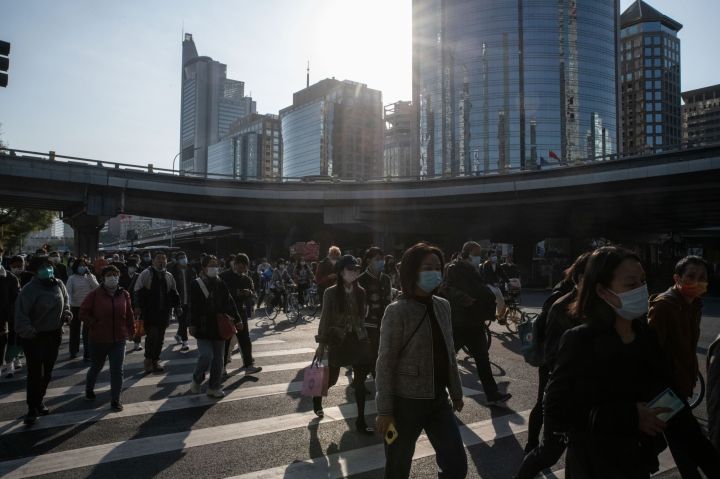International Finance
SA needs to up its game or risk missing out on a China-driven commodity boom

As China’s economy awakens, so do the prospects for the commodity market after prices have steadily come off since Russia invaded Ukraine. Commodity booms have always served South Africa exceptionally well, but this time, with the energy and transport sectors in dire straits, the country stands to lose out on the revenues that flow out of the upswing.
China was the sleeping giant that left the rest of the world to its own devices last year. But, barring another overwhelming wave of Covid, the world’s economy is set to return to form, contributing some 30% to much-needed global growth this year.
Analysts are becoming increasingly bullish, predicting the world’s second-largest economy, which comprises 19% of world GDP, will return to its pre-pandemic growth trajectory of 5%-plus – well ahead of its sub-3% growth rate in 2022.
That has massive implications for a commodity market that has seen prices come off significantly from their post-war peaks, depressed by fast-rising interest rates and slowing global growth rates. The hardest hit has been base metals like copper, which tanked 16% in 2022, and magnesium, which was the worst-performing commodity last year, more than halving in value.
Price declines from their peaks post Russia’s invasion of Ukraine are even steeper. Oil prices hit a high of $114 a barrel but ended the year 30% lower at $80. JP Morgan predicts that Brent crude oil will average $90 a barrel this year, lower than its previous $98 a barrel forecast, which becomes its 2024 prediction.
“After maintaining our price view for eight months, we now opt to shave $8 off our 2023 price projections, on our expectations that Russian production will fully normalize to pre-war levels by mid-2023,” says Natasha Kaneva, head of global commodities strategy at JP Morgan.
That’s relatively good news for local fuel consumers, meaning fuel prices are less likely to rise again after last year’s doubling in price. But it also means fuel prices are unlikely to decline to pre-war levels for the foreseeable future and unless the global economic outlook becomes far more favourable than is factored into economic and analyst outlooks.
Copper, seen as reflective of the state of the world economy, has come off 31% off its peak in February last year. The metal dominated headlines two years ago when it doubled in price between May 2020 and March 2021, bolstered by Chinese consumption and the supply deficits at the time.
This highlights that, without China, this year’s outlook for commodity prices would be, at best, more of the same. If the world’s biggest advanced economies, the US and Europe, fall into recession as expected, prices could fall even further.
Goldman Sachs is optimistic about the commodities outlook for another reason – the underinvestment in 2022. Based on their fundamental analysis, they believe that the potential for most commodities is “more bullish than it has been at any point since we first highlighted the supercycle in October 2020”. So much so that it expects commodity prices, as measured by S&P GSCI TR Index, to increase by 43%.
It bases its optimism on “the startling lack of investment in commodities for tomorrow” and the prospect of growth rebounding together with China reopening, Europe improving its energy efficiency and slowing Fed rate hikes. The bank adds: “Without sufficient capex to create spare supply capacity, commodities will remain stuck in a state of long-run shortages, with higher and more volatile prices.”
South Africa is one of the commodity exporters that stands to benefit considerably from the commodity price boom. Early last year the government raked in far more than usual corporate taxes as the mining sector boomed. The windfall enabled the Treasury to bring its targeted primary budget surplus within reach over the Medium-Term Budget time horizon.
Achieving this long-awaited fiscal stability – the cornerstone of any healthy economy – would be a major milestone and more than likely see credit rating agencies reward the government by upgrading the country’s credit rating from junk to investment status, putting SA assets on the global investment map again.
Since last year, however, there’s been a significant deterioration in the state of our energy and transport resources, and the latest mining statistics highlight the difficult times the sector is going through. With no improvement yet in sight, the country is unlikely to benefit as fully in a potential base metal and minerals price revival compared with last year. Also, the likelihood that the dollar will be weaker than last year, if there are no unexpected headwinds, will also eat into the rand-based revenues earned by mining companies.
South Africa’s main resources exports are iron ore, coal, and precious metals. With the country the third largest exporter of iron ore in the world, South Africa stands to benefit considerably from a pickup in China’s demand for iron ore if it can get the ore to market this year.
The iron ore price has already risen sharply in anticipation of the unleashing of demand as China gets its economy back on track. However, there may be a ceiling to the rally, which has seen the price increase to above $120, more than 50% from the lows of just under $80/t in early November 2022. China’s National Development and Reform Commission is concerned about the pace of the increase and announced it would dampen speculative activity to ensure the smooth operation of the iron ore market.
Coal was the best-performing commodity price last year, ramping up 154% as demand soared in the face of the energy crisis brought on by the Russia-Ukraine war. The International Energy Agency recently reported that global coal consumption had reached an all-time high in 2022 – and it expects consumption to remain as high through to 2025. South Africa could be in the enviable position of becoming Europe’s alternative to Russia in sourcing coal – once again, only if it can overcome labour strikes, vandalization of rail networks, and unrest.
The odds of South Africa being able to get its fair share of a potential resurgence in China’s demand for commodities in the years ahead are not looking favourable. The one positive is that the impact of China’s reopening on commodity markets is not going to be a once-off event and if the analysts are right, its economy will once again become a longer-term driving force behind global growth. So if South Africa manages to get its house in order, it still stands to benefit. BM/DM



















Comments - Please login in order to comment.